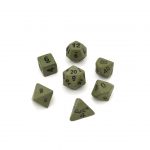Crafting a Warforged Paladin: A Guide for Epic Adventures
Dungeons & Dragons (D&D) offers a plethora of character options, but few are as compelling as the Warforged Paladin. Combining the resilience of a construct with the divine power of a holy warrior, this character is perfect for both beginners and seasoned players. Let’s delve into the steps to build an unforgettable Warforged Paladin and some tips to maximize your gameplay experience.
Getting Started: The Warforged Race
The Warforged are a race of living constructs, originally created to fight in wars but now seeking their own purpose. Their unique traits provide a solid foundation for a Paladin character:
- Constructed Resilience: Advantage on saving throws against poison, resistance to poison damage, and immunity to disease.
- Sentry’s Rest: You only need six hours of rest, and you remain semi-conscious, making you alert to danger.
- Integrated Protection: Your body can be modified to incorporate armor, providing an AC bonus.
Choosing the Paladin Class
The Paladin class is known for its versatility, combining martial prowess with divine magic. Here are some key features that make it a perfect match for the Warforged race:
- Divine Sense: Detect celestial, fiendish, or undead presences.
- Lay on Hands: Heal yourself and others with a pool of hit points.
- Fighting Style: Choose a style that complements your combat strategy, like Defense or Great Weapon Fighting.
- Spellcasting: Access to a variety of spells that can heal, protect, and smite your enemies.
- Divine Smite: Channel divine power into your attacks for extra damage.
Building Your Warforged Paladin
Now that you understand the basics, let’s build your Warforged Paladin step by step:
Step 1: Ability Scores
As a Warforged, you get a +2 to Constitution and +1 to another ability score of your choice. For a Paladin, focus on Strength and Charisma:
- Strength: Essential for melee attacks and damage.
- Charisma: Powers your spells and abilities like Divine Smite and Lay on Hands.
- Constitution: Increases your hit points and resilience.
Step 2: Equipment
Starting equipment for a Paladin typically includes:
- Weapon: Choose a versatile weapon like a longsword or a heavy weapon like a greatsword.
- Armor: Your Integrated Protection allows you to incorporate armor into your body. Consider heavy armor for maximum protection.
- Shield: Provides a significant boost to your Armor Class (AC).
Step 3: Oaths
At the 3rd level, Paladins choose a sacred oath that shapes their abilities and role-playing. Some popular options include:
- Oath of Devotion: Focuses on honesty, courage, and protecting the innocent.
- Oath of Vengeance: Specializes in tracking down and punishing wrongdoers.
- Oath of the Ancients: Emphasizes protecting nature and the light.
Tips and Tricks for Beginners
Building a Warforged Paladin can be daunting, but these tips will help you get the most out of your character:
- Teamwork: Paladins shine in a team. Use your healing and protective abilities to support your allies.
- Spell Management: Your spell slots are limited. Use them wisely, focusing on spells that enhance your combat abilities or provide crucial healing.
- Role-Playing: Embrace the unique aspects of being a Warforged. How does your character view life, emotions, and their divine mission?
- Combat Strategy: As a frontline fighter, positioning is key. Use your high AC and hit points to draw enemy fire and protect squishier party members.
- Customization: Don’t be afraid to tweak your character as you level up. Experiment with different spells, fighting styles, and feats to find what works best for you.
Conclusion
Creating a Warforged Paladin is a rewarding experience that combines rich lore, versatile gameplay, and the potential for deep role-playing. Whether you’re a beginner or a veteran, this guide will help you build a character that’s both powerful and engaging. So grab your ceramic dice set, gather your party, and embark on your next epic adventure!
Author: James Butler
-
Fireball Ceramic Dice Set
Select options This product has multiple variants. The options may be chosen on the product page -
Forgotten Forest Ceramic Dice Set
Select options This product has multiple variants. The options may be chosen on the product page -
Ancient Scroll Ceramic Dice Set
Select options This product has multiple variants. The options may be chosen on the product page



